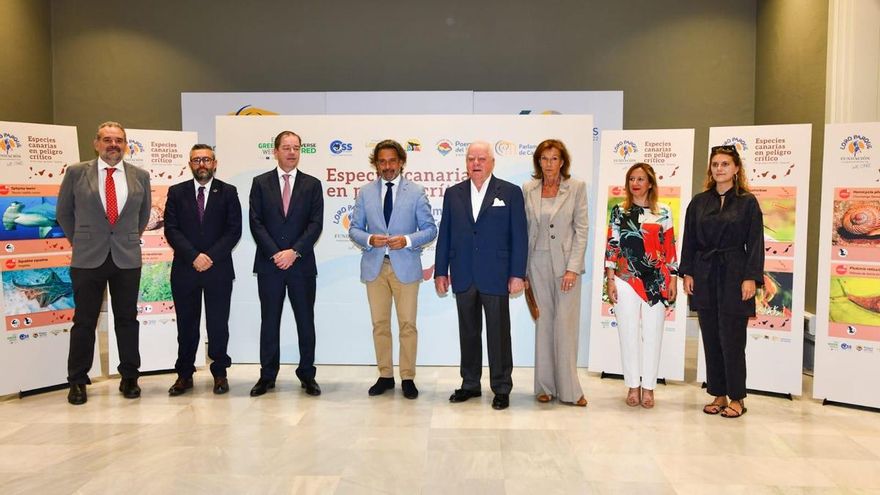
Loro Parque Foundation recently organized in Parliament of the Canary IslandsNext to the International Union for Conservation of Nature (IUCN) and the Canary Islands Government, a conference dedicated to the need to act against the threats to the rich biodiversity of the Canary Islands. The activity of the Macaronesian Species Survival Center (Center for Species Survival Macaronesia), conceived as an observatory of threatened biodiversity and a collaborative platform to make available to regional and insular administrations all the global conservation tools developed by the different IUCN groups.
The great objective of this center is «raise awareness in Canarian society about the need to conserve the extraordinary biodiversity of the archipelago, making visible the species on the brink of extinction at the hands of experts from Canarian universities». One of his first initiatives is a collection of photos with information on the 94 critically endangered species that exist in the Canary Islands, which is disseminated through social networks until next June 5. In addition, a panel exhibition has been presented on some of these critically endangered species from around the archipelago.
The act was presented by the president of the Parliament of the Canary Islands, Gustavo Matosand closed by the second vice president, Rosa Davila. It featured speeches by the Deputy Minister for the Fight against Climate Change and Ecological Transition of the Government of the Canary Islands, miguel angel perez; the president of Species Survival Commission of IUCN, Jon Paul Rodriguezand the coordinator of Center for Species Survival Macaronesia and director of the Loro Parque Foundation, Javier Almunia.
Matos recalled that “environmental issues are already one of the main concerns of citizens and institutions”, and acknowledged that, despite the protection measures, “Canary Islands is suffering the same threat that we observe throughout the planet, a planet that is only one; there is no plan B. Dávila remarked that the exceptional biodiversity of the Canary Islands makes it a “true world laboratory for the study of species considered authentic jewels of nature. However, we see today how climate, environmental and human impacts represent a serious threat».
miguel angel perez he recalled that the Canary Islands are a “planetary hotspot” of biodiversity with the largest number of protected species in the European territory. He underscored the “serious threat” our species are facing, “not just from human interaction, but also from that silent invasion of alien species due to climate change.” He valued the joint work with administrations and foundations such as Parrot park to “front page” protection.
Javier Almuniahighlighted the role that Center for Species Survival Macaronesia is called to develop as an observatory of threatened biodiversity. He specified that this organization has identified in the Canary Islands 30 percent of its species and subspecies threatened, something that is added to a significant loss of biodiversity and, also, to the added danger represented by the introduction of invasive species. Of this 30 percent, 5 percent are critically threatened.
















